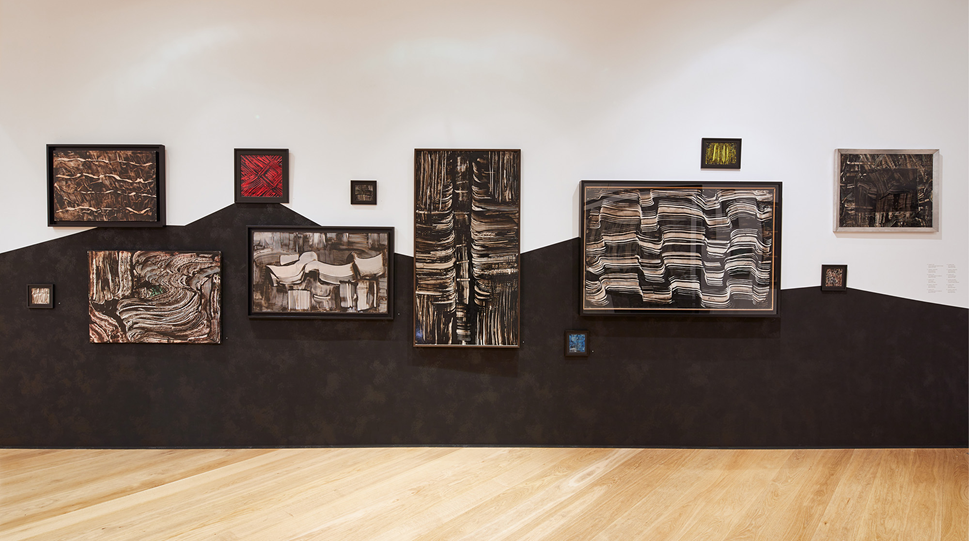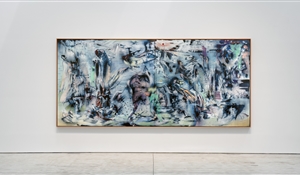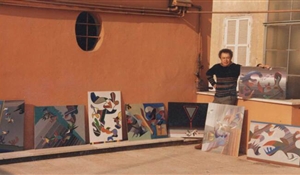A Note on an Artwork by Behjat Sadr
09 Dec 2021Reviews on TMoCA's permanent collection
This series of notes are written in order to introduce Iranian artworks in the permanent collection of Tehran Museum of Contemporary Art.
The common characteristic amongst Behjat Sadr's artworks is the repeated rhythm of parallel large lines and prominent, sometimes wavy grooves that evoke the texture of tree bark- vertical and horizontal curves twisted all over the canvas.
The process is based on dripping and then removing the paint, so that the image forms, not in the act of pouring, but mainly in the act of removing. The process is evident also in the painting below. Sadr pours the thick paint directly on the surface and spreads it with a spatula, or a spatula-shaped tool, until the negative textures and forms appear on the canvas. Basically, the lines in this painting appeared likewise. Regarded as interspaces between thick lines, the grooves are essentially result of removing the extra paint from the concerned areas. The shades of colour and greys appearing in some areas are also the effect of removing various amounts of paint from the surface.

Behjat Sadr | Untitled | 50 × 65 cm
The dominant colour in this painting, similar to many of her paintings, is the powerful and expressive black; which, as the artist said, reminds her of the pale, almost black shadows of the trees lining the banks of the Seine river in winter. Only the black lines distinguish the grey grooves from the monochromatic background. Thus the evocations of trees’ barks as a characteristic of Sadr's painting, does not seem unrealistic. As the artist claims, these paintings were inspired by her persistent visual memories.
The creating process was improvised and without a sketch. Nevertheless, this requires a powerful technique and capability. Using the spatula with mastery is what has made it possible to create such thin and thick lines along with wavy planes, which by juxtaposing and creating a repetitive expanse of lines composed a lyrical abstract painting. The creation takes place not in the act of pouring, which can also be seen in other expressionist artists, but in the act of removing the paint: Thus in the processes of painting, the artist's aesthetics and its visual appearance are more contributive than randomness and spontaneity. Therefore, in Sadr’s artworks, instead of an action painting, we encounter a formalistic order.
"Untitled" by Behjat Sadr, Courtesy of the Permanent Collection of TMoCA, Property Code: 2272






